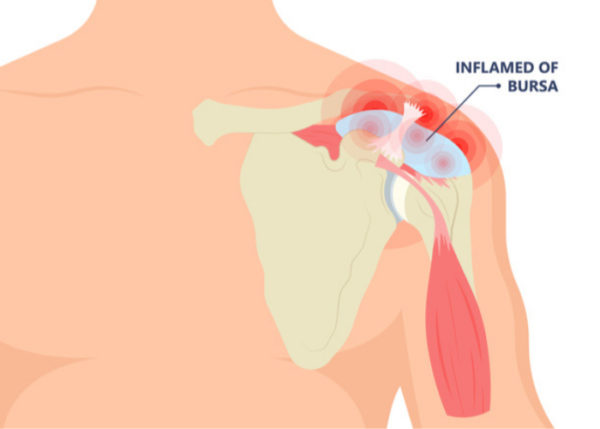Shoulder Bursectomy Doctor

Do you regularly participate in activities that require repetitive overhead arm movements and have subsequently experienced shoulder pain? A condition known as shoulder bursitis is often caused by inflammation from overuse, stemming from constant friction in the shoulder. In severe cases of shoulder bursitis, also called shoulder impingement syndrome, surgery may help alleviate pain and restore function. Shoulder bursitis surgeon, Doctor Riley J. Williams provides diagnosis as well as surgical and nonsurgical treatment options for patients in Manhattan, Brooklyn, New York City and surrounding areas who are experiencing the symptoms of shoulder bursitis or shoulder impingement syndrome. Contact Dr. Williams’ team today!
What is shoulder bursectomy?
Shoulder bursectomy is arthroscopic surgery that is performed to remove an inflamed bursa. The human body has over 150 bursae that rest between the bone and soft tissues found in many large joints, including the shoulder. There are five main bursae in the shoulder, and when any of these become irritated, it causes inflammation and a condition known as bursitis. The subacromial bursa sits between the top of the rotator cuff and the roof of the shoulder (acromion process). The subacromial bursa can become inflamed by overuse and repetitive overhead arm motion. A shoulder bursectomy is often performed when bursitis persists despite the application of nonoperative treatment modalities. Shoulder bursectomy physically removed the inflamed thickened bursa; this procedure provides patients with pain relief and better shoulder function. When a damaged bursa is removed, a healthy bursal layer grows in its place. Dr. Riley J. Williams, orthopedic shoulder surgeon, serving Manhattan, Brooklyn, New York City, NY and surrounding areas, has extensive experience in performing shoulder bursectomies and other shoulder treatments.

What is bursitis?
Shoulder bursitis or shoulder impingement syndrome occurs when there is an irritation that causes inflammation to the subacromial bursa. The role of bursae is to reduce friction and cushion joints. Increased friction or pathologic overuse can cause the bursa to become inflamed and painful. More severe cases of bursitis can be characterized by an overproduction of fluid and thickening of the bursal tissue. The extra production of fluid can enlarge the bursa; persistent fluid collection associated with bursitis can lead to a predilection toward infection (most commonly in the elbow). Bursitis may be seen in individuals who participate in activities that require repetitive overhead arm movements such as painting, building, swimming, and throwing.
How is a shoulder bursectomy performed?
The surgery is performed under sedation and regional anesthesia; patients typically go home shortly after the procedure on the same day. The procedure is done arthroscopically, which requires two to three small incisions made about the shoulder girdle. An arthroscope is a small camera that’s used to insert in the shoulder to display images of the injury onto a monitor. These images allow Dr. Williams to perform the bursectomy. The inflamed bursa is removed with a small vacuum shaver. If needed, Dr. Williams may remove a small amount of overhanging bone (spur) if he determines that this bony issue was part of what caused the bursitis condition.
What are the risks?
Surgery can come with risks such as blood vessel damage, nerve damage, infection or numbness at the incision sites. Because arthroscopic surgery only requires small incisions, these risks are rare. There is a chance with a bursectomy that an individual may experience pain and a feeling of rubbing or friction in the shoulder joint after surgery until the shoulder fully heals.
How long does it take to recover?
Dr. Williams recommends patients us a sling for 5-7 days following shoulder bursectomy. Physical therapy starts one week after the procedure. Normal activities can be resumed shortly after with pain tolerance as a guide. There are no restrictions or limitations after a bursectomy. A full recovery is anticipated between 2-3 months.
For additional resources on a shoulder bursectomy or to have your shoulder pain evaluated, please contact the office of Dr. Riley J. Williams, orthopedic shoulder surgeon serving Manhattan, New York and the surrounding New York boroughs.
